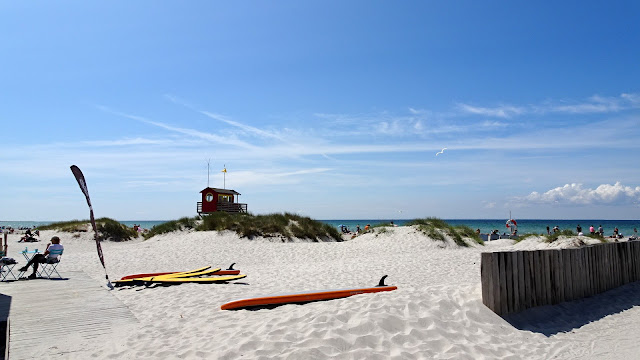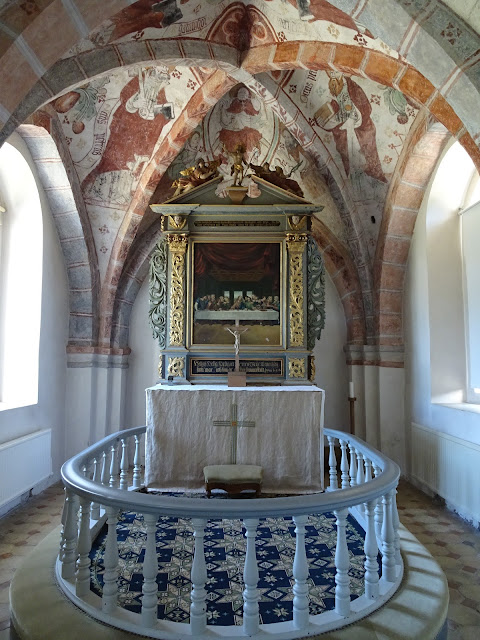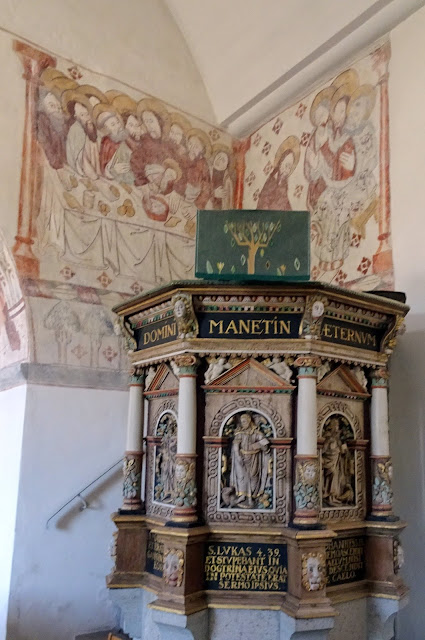Skanör Church (Diocese of Lund, Church of Sweden / Skåne, Sweden)
Skanör on the north side of the Falsterbo peninsula in south-west Skåne was an important trading center back in medieval times.
There was probably a church there already in the 12th century. The present church dates back to the first half of the 13th century. It was originally built in Romanesque style, which can still be seen in the vaulted ceiling of the nave. But like every other old church it has gone through a number of changes and additions over the centuries. The choir for example has windows in Gothic style; and the main altar is a Renaissance altar, probably made in Malmö.
This is a votive ship that caught my eye. I have had some of those before on my blog, I think. They are very common in Swedish churches, especially in the coastal areas. They were often given as thanks from sailors for having been saved from drowning at sea.
Skanör is "C" on this map
(from the 4th day of our trip back in July)
(from the 4th day of our trip back in July)
Skanör today has a popular marina and beach area, attracting a lot of tourists in the summer. Looking north, far off in the distance you can also see the Öresund bridge between Malmö and Copenhagen, and an offshore wind farm near that bridge.
Inspired Sunday #335






















































